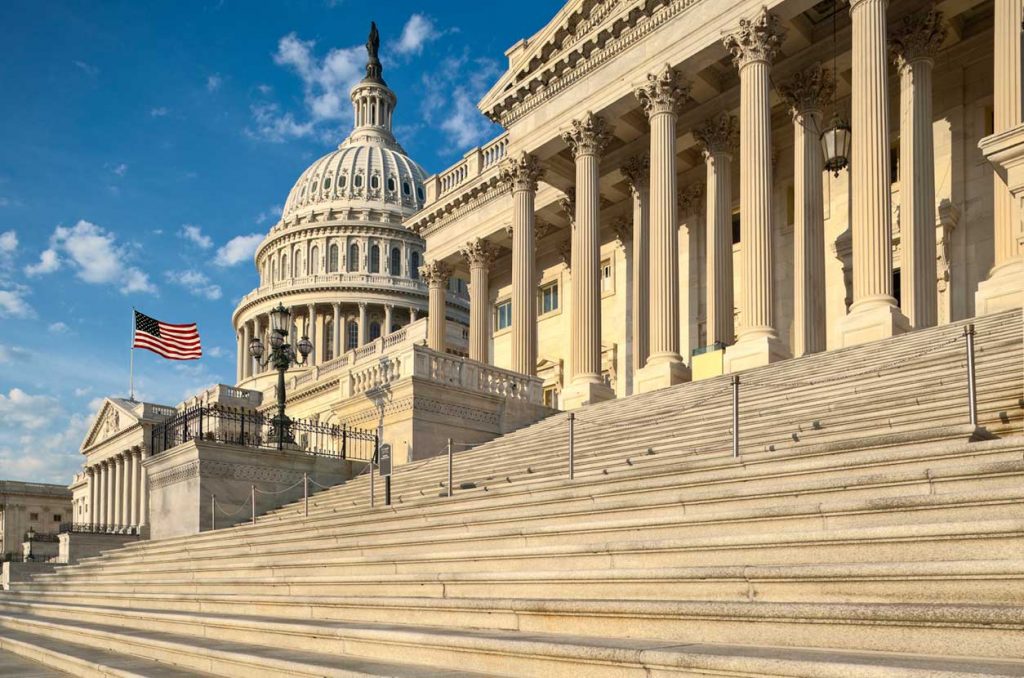Summer comes to an end next week as Congress returns to the Capitol after a five-week recess. Deadlines will be the theme this fall, with the first being the Oct. 1 funding deadline to keep the government open. The second important deadline for ASCE is Oct. 29, when MAP-21, the surface transportation bill, expires. With a D+ cumulative GPA, the topic of America’s infrastructure should be at the top of their to-do lists. Congress has several opportunities to address some of the nation’s infrastructure needs in the coming weeks. Here’s what to watch:
1. Transportation
Before the U.S. Senate adjourned for August recess, they passed the DRIVE Act, a six-year surface transportation bill. The DRIVE Act would end the current cycle of short-term program extensions and increase federal funding for surface transportation programs. The U.S. House of Representatives has until a new deadline of October 29 to act to pass their own multi-year bill before the current law expires. ASCE has been focused on communicating with House members on the need to act quickly and pass a long-term bill. You can help by contacting your House members and urging them to #FixTheTrustFund.
2. Appropriations for Federal Infrastructure Programs
So far this year, the House has only passed six of 12 annual appropriations bills and the Senate has not yet passed a single one. There is an Oct. 1 deadline to complete this year’s appropriation. Among the major dilemmas holding up the appropriations process are disagreements over the overall funding amounts for the federal government, policy riders that bog down spending bills and fundamental differences on what level to fund federal environmental, healthcare and military programs.
While it’s difficult enough for Congress to fund popular established bipartisan programs like the Drinking Water and Clean Water State Revolving funds (which are facing 23% cuts), newer programs, like the Levee Safety Initiative, have not received any funding since the Water Resources Reform & Development Act (WRRDA) passed. If these programs do not receive appropriations, then the progress made by creating them becomes stagnant and no real progress is made in addressing the infrastructure the legislation aimed to improve.
With only 12 days to debate the remaining appropriations bills and take full chamber votes, Congress will resort to passing a short-term extension of federal government programs at the same funding levels as last fiscal year. These patches – also known as continuing resolutions – have become the common fallback solution where such large disagreements – even among members in the same party – impede the “regular order” appropriations process from working.
3. STEM and Science
To ensure we have enough engineers to be stewards of our nation’s infrastructure in the future, we need to educate today’s students in STEM. Congress will return with competing legislation to reauthorize the Elementary and Secondary Education Act (ESEA); the last version was known as the No Child Left Behind Act, which would make changes to STEM education policies. The House version, known as the Student Success Act (H.R. 5), has been a purely partisan affair from the beginning, and passed the House with no Democratic Support. The Senate version, known as the Every Child Achieves Act of 2015 (S. 1177), is a bipartisan compromise measure which passed that chamber with wide support. The House bill makes significant cuts to educational programs and places no emphasis on science, technology, engineering, and mathematics (STEM) programs. The Senate bill includes a focus on improving learning in the critical STEM subjects. ASCE, as a founding member of the STEM Education Coalition, strongly favors the Senate bill. It remains to be seen if House Republicans will be willing to compromise enough to move the legislation.
Also facing the House/Senate divide is legislation to reauthorize the America COMPETES Act, which authorizes most of the nation’s non-medical, civilian research and development programs. The House passed H.R. 1806, the America COMPETES Act Reauthorization, earlier this year along the same partisan divide on their education bill. The House bill has been strongly condemned ASCE and other engineering, scientific, academic, and industry groups for making cuts to several areas including geosciences, as well as altering the National Science Foundation’s time-tested peer review method of awarding grants. The Senate Commerce Committee is meanwhile struggling to reach a bi-partisan compromise. Both pieces of legislation are long overdue and needed going forward, however if past performance is any indication then success is unlikely.
This summer the Senate demonstrated that they can make infrastructure legislation a priority by passing the DRIVE Act. Now it’s time for that momentum to carry into the fall. Tell your members of Congress to make infrastructure a priority through the Save America’s Infrastructure phone app for iPhone and Android or online.
Congress’ Infrastructure To Do List for Fall
